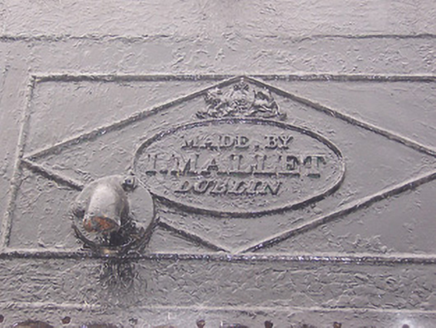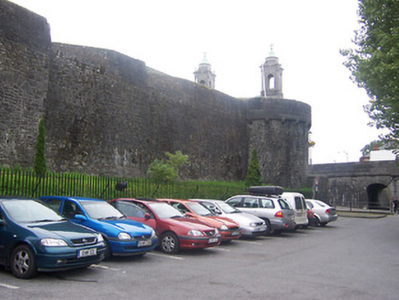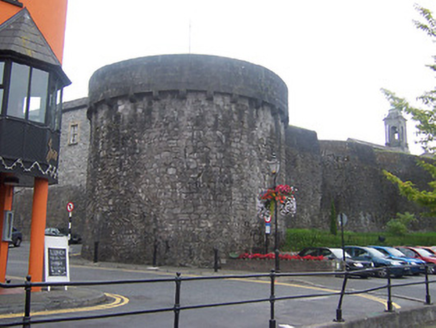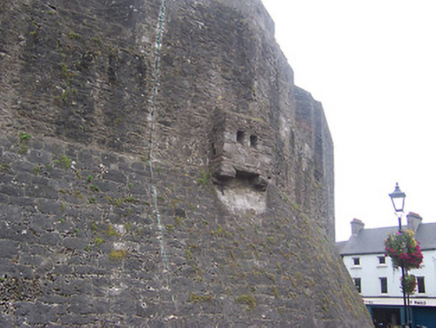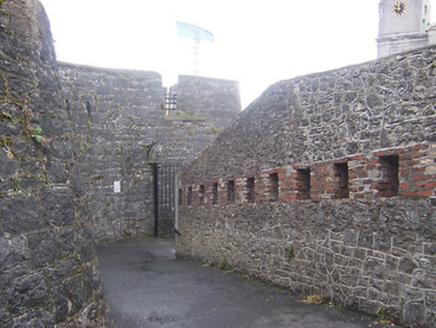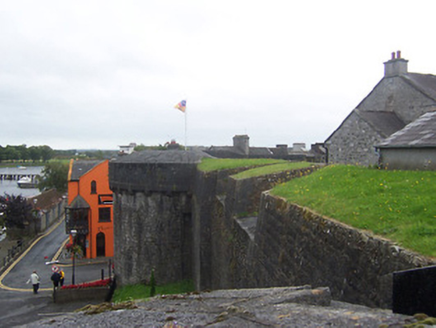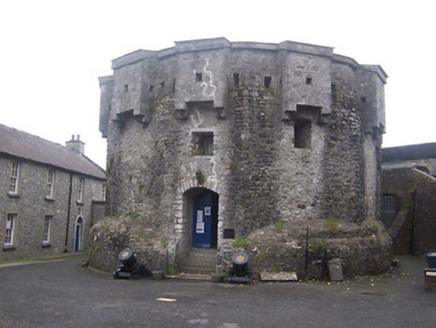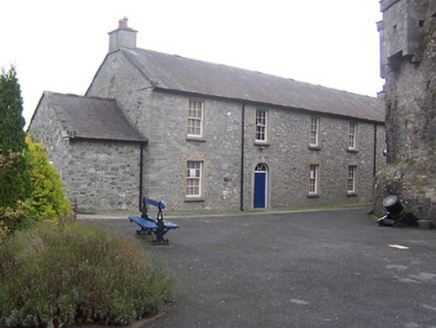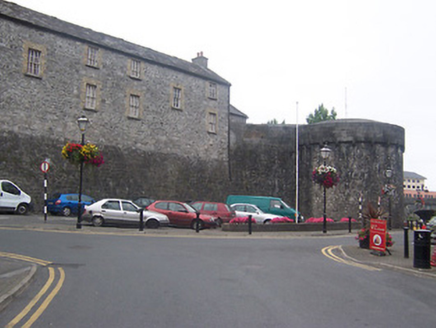Survey Data
Reg No
15000352
Rating
National
Categories of Special Interest
Archaeological, Architectural, Historical
Original Use
Fortification
Historical Use
Fortification
In Use As
Museum/gallery
Date
1210 - 1830
Coordinates
203854, 241423
Date Recorded
06/09/2004
Date Updated
--/--/--
Description
Freestanding Norman castle, built c.1210, consisting of a polygonal keep with early-nineteenth century machicolations surrounded by a thick rubble limestone curtain wall (on pentangular plan with pronounced base batter) having three polygonal bastions to north and east side facing over bridge and River Shannon. Largely rebuilt by British Army between c.1800-1827. In military ownership until 1970, now in use as a museum. Tower to Market Place elevation crowned by early-nineteenth century cast-iron water tank by Mallet of Dublin. Garderobe to northern part of curtain wall. Detached five-bay two-storey barrack building to interior, built c.1810. Constructed of coursed rubble limestone with pitched slate roof, square-headed window openings with six-over-six pane timber sliding sash windows and a round-headed doorcase with timber door and spoke fanlight above. The ramp up to the castle has a line of pistol loops. Castle located on east bank of River Shannon overlooking Shannon road bridge (to north east) and site of earlier bridges (to east).
Appraisal
An imposing structure that dominates the left bank of the River Shannon and originally defended the strategically important Shannon River crossing. It has played a central role in the history of Athlone and in the development of the street plan on the Connaught side of the town. The castle was originally founded by John De Gray in 1210 but the extant curtain wall and the bastion towers were originally built at the end of the thirteenth century. The castle was heavily damaged in the 1691 siege and by an accidental explosion in 1697. The castle was described as 'ruinous' in a number of eighteenth century accounts but was repaired and adapted by the British Army during the first decades of the nineteenth century as part of a series of defences along the Shannon to defend against possible French invasion. The machicolations on the keep and the bastion towers date from this period and they are similar in appearance to those found on Martello Towers, which date to the same time and were built for the same purpose. The castle remains an important historical monument and a focal point in the centre of Athlone.
